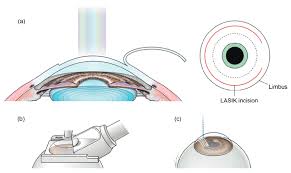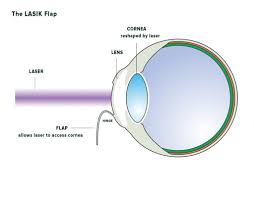Table of Contents
ToggleIf you have ever had eyesores, you are aware of how annoying its signs may be. You could feel dryness, discomfort, or even a sense that an object is impaled in your eyes. You could find that occasionally you get pains and itchy eyes simultaneously. Many people suffer from frequent illnesses, including migraines and chapped eyes. On occasion, it may seem that both of these issues are related. So, Can Dry Eyes Cause Headaches? Let’s check!
What are Dry eyes?
A condition called dry eye develops whenever you experience a problem with your water film. The fluid coating that coats the exterior of the eyelid is called a layer of tears. It comprises a total of three levels, every one of which plays a significant role in maintaining the well-being of your eyes:
1. Your meibomian cells create a greasy coating.
2. Your lacrimal ducts create a liquid (watery) covering.
3. A mucous coating formed in your eye’s cornea
Each of these layers may be challenging, directing to dry eyes. The two categories of dry eye irritation that could harm your eyes are-
Permeable Dry Eye
The most typical type of dry eye is convective dry eye. Whenever tears miss the lubricating layer, convective dry eye develops. The skin around your eyes may dry if the tears lack sufficient moisture to prevent them from evaporating rapidly.
Tear Deficiency in Water
Water-inadequate dry eye is an additional frequent variety of dry eyes. This dry eye develops when your tears don’t have the correct watery layer. When this occurs, your eyes cannot generate sufficient tears to keep them fresh.
What Can You Do to Treat Dry Eyes?
The reasons for dry eye illness are numerous and include the following:
- Therapies
- Blustery or humid circumstances
- Permanent or annual allergies
- Concerns about health
- Specific medicines
- Extended screen time
- Continuous use of contact lenses
- Insufficient water
Getting a visual exam is the sole means to identify the reason for your dry eyes. Your doctor of optometry will examine your extended family’s past health history and carry out a battery of examinations throughout an eye exam to identify the true reason for what you are experiencing.
Headaches & Dry Eyes
Multiple investigations have discovered a correlation between dry eye illness and migraines. However, the reason why these conditions are linked to headaches is still being determined.
The Connection Regarding Headaches and Dry Eyes-
Although a great deal more study is required to comprehend the connection between eyesores and migraines fully, it was demonstrated that:
Individuals who frequently have migraines have a ten percent higher chance of developing dry-eyed syndrome.
Dry eyes can vary in migraine duration, signs, or intensity-
1. If a person is susceptible to migraines, alterations in the eyes, such as signs of eye irritation, could be the cause.
2. Exposure to Light, discomfort in the eye, and puffiness are signs of migraines and chapped eyes in general.
Possible Causes of the Headaches-
Additional study is required to determine the connection between migraines and itchy eyes. It’s yet unclear whether one disorder leads to both or if they are simply signs of each other.
Numerous similar factors can both produce dry eyes and headaches, including:
1. The eye’s shape
2. Eye damage or disease
The Care for and Prevention of Headaches Due to Dry Eyes –
If you find that you’re experiencing dry eyes and headaches at the same time regularly, you should request an appointment with your optometrist to determine the cause. One may be causing the other or result entirely from something else.
Your optician can determine the cause(s) for your irritation, help you treat whatever signs you may have, and diagnose the condition.
Therapies-
Based on the nature and intensity of your illness, there are numerous ways to manage dry eye syndrome. Dry eye clinics use the following therapies for the management of dry eye:
- Synthetic tears or lotions,
- Pharmaceutical drops for the eyes,
- Oral medications,
- Proper lid hygiene practices,
- Dietary supplements,
- Blithe,
- Manual motions are just a few examples,
- Connects for Puncta and Lip iView,
- Ocular Light: a mixture of low light therapy (LLLT) and strong pulse light (IPL).
Can Dry Eyes Cause Headaches? Can it be prevented?
You may do these steps to stop your pupils from drying out if the dryness and migraines are related. Try to stay away from:
• Pollution-prone places
• increased use of screens,
• Bright sunlight
The signs of dry eyes are:
• blistering or discomfort in the eye
• Tension
• A feeling a sensation gets lodged in the eye,
• Excessive blinking,
• crying
• Sensitivity to Light
• Vision blurry
• Headaches
Individuals who get migraines may notice that they begin before they experience dry eyes when they begin getting clean or following an episode of dry eyes.
In addition to their usual discomfort, migraines can also result in signs affecting the eyes and sight. For instance, intolerance to brightness or strange visual perceptions may be brought on by headaches caused by migraines. Migraines with clusters might also bring on a stinging feeling above one eye.
Additional possible connections between headaches and dry eyelids consist of the following:
Cluster headaches:
Intense headaches that typically only impact a single side of the brain are known as headaches with clusters. Some individuals report feeling discomfort or a piercing feeling in or near their eyes. They can mistake this for dry eyes or think that dry eyes are to blame for the discomfort.
Eye strain:
Blurred vision may result in dry or worn-out eyes. A few individuals can blame dry eyes for this. In addition to migraines and various types of stress on the muscles, including neck discomfort, individuals who suffer from blurred vision may also feel discomfort in their necks and migraines. This is particularly prevalent if they spend much time staying still and looking at a laptop.













